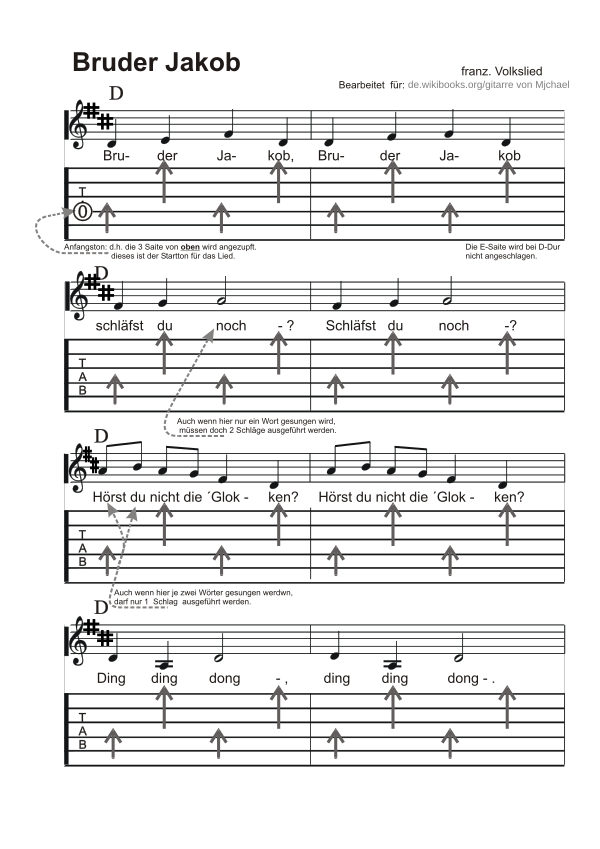Gitarre: Liedbeispiel 1a
Erscheinungsbild
< D-Dur-Akkord und 4/4-Schlag
Bruder Jakob
[Bearbeiten]franz. Volkslied Alternativtitel: Frère Jacque • Text und Melodie: trad. und Mjchael
Brother John
[Bearbeiten]
Frère Jacques
[Bearbeiten]
(The accompaniment was generated automatically and is only similar to the guitar accompaniment.)
- Übrigens,
du musst in diesem Kurs keine Noten lesen können. Wichtiger als die Noten sind hier die Bemerkungen auf dem Liederblatt. Es schadet jedoch nicht, wenn du Notenlesen kannst. Aber auch ohne große Notenkenntnisse können dir die Noten helfen, eine ungefähre Vorstellung vom Melodieverlauf zu bekommen. Sehr hilfreich sind die Taktstriche, an denen du erkennst, wie lange ein Schlagmuster ausgehalten werden muss.

